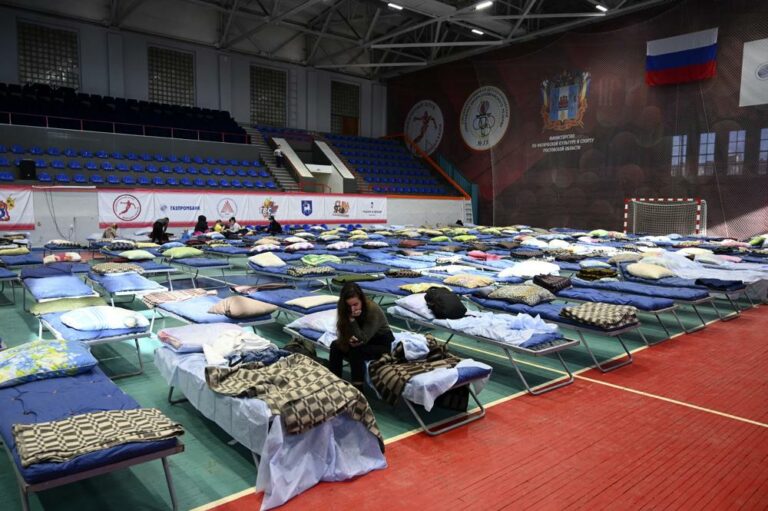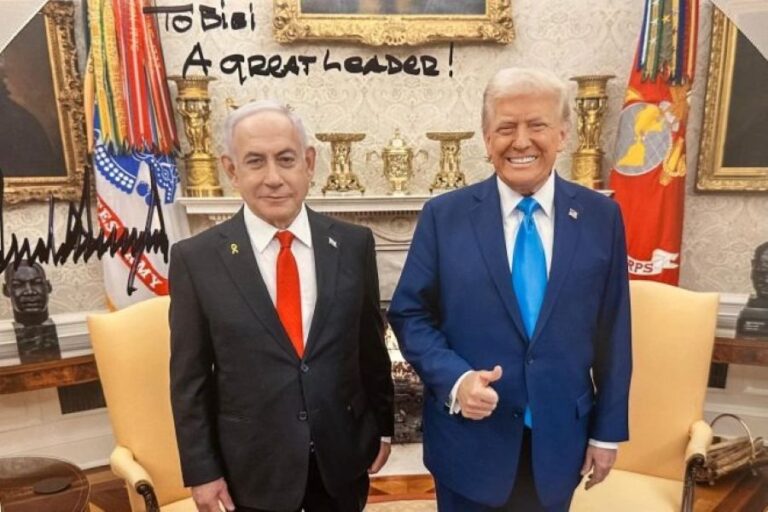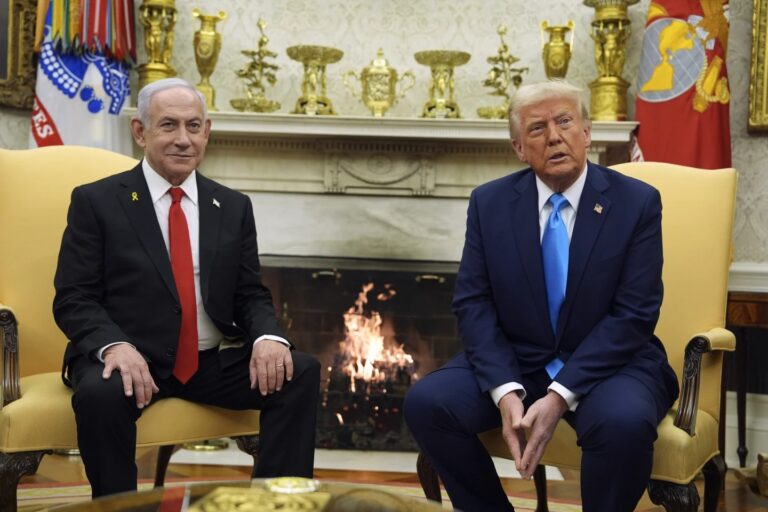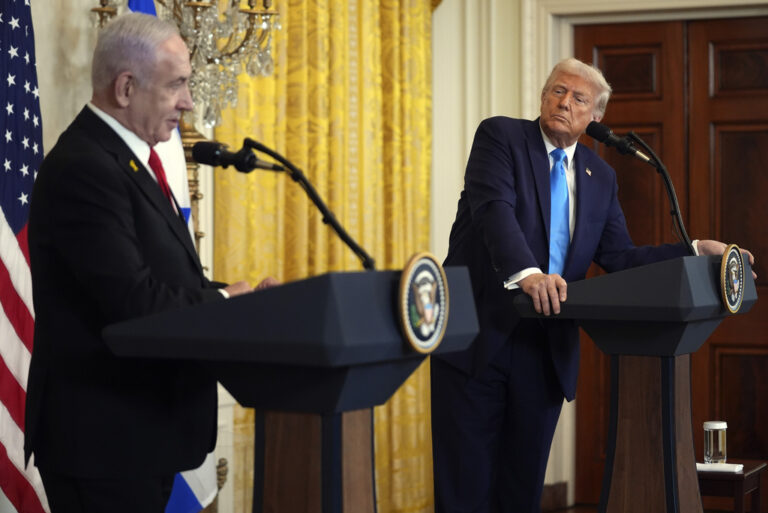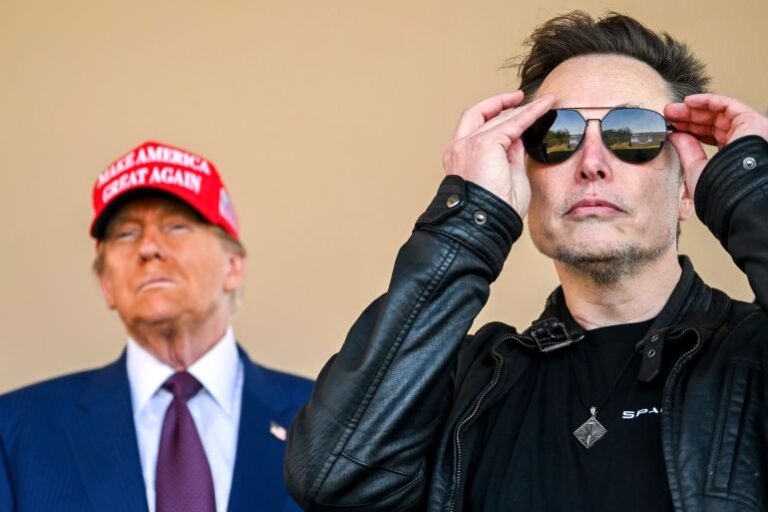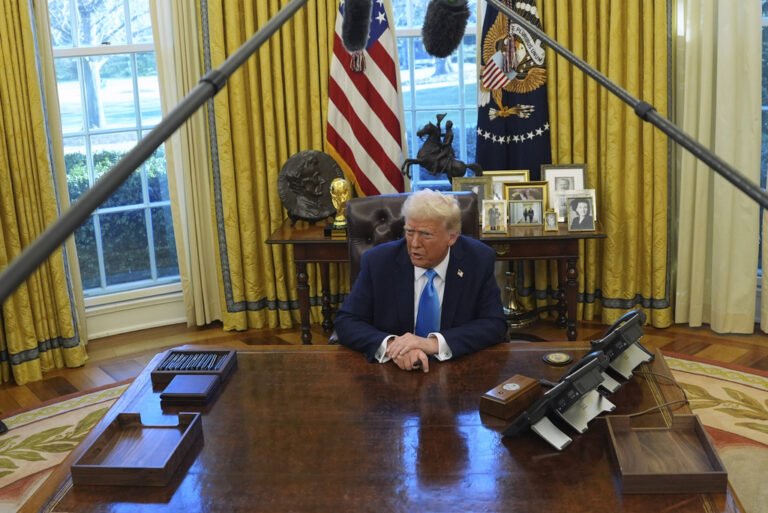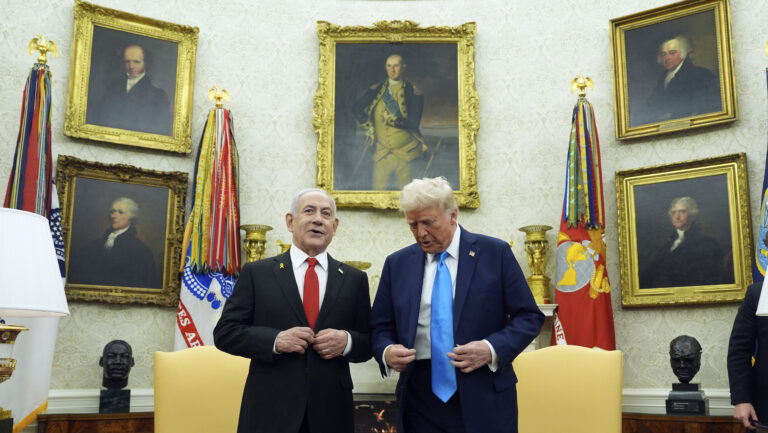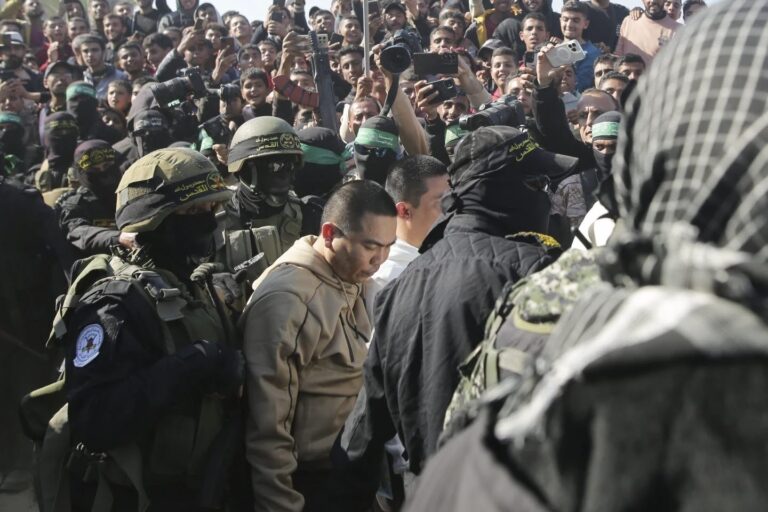Russian President Vladimir Putin convened top officials Monday to consider recognizing the independence of separatist regions in eastern Ukraine, a move that would ratchet up tensions with the West amid fears that the Kremlin could launch an invasion of Ukraine imminently.
The publicly staged, pre-recorded meeting of the presidential Security Council came amid a spike in skirmishes in eastern Ukraine that Western powers believe Russia could use as a pretext for an attack on the western-looking democracy that has defied Moscow’s attempts to pull it back into its orbit.
With an estimated 150,000 Russian troops massed on three sides of Ukraine, the U.S. has warned that Moscow has already decided to invade. Still, the American and Russian presidents tentatively agreed to a possible meeting in a last-ditch effort to avoid war.
If Russia invades, the meeting will be off, but the prospect of a face-to-face summit resuscitated hopes that diplomacy could prevent a devastating conflict, which would result in massive casualties and huge economic damage across Europe, which is heavily dependent on Russian energy.
Even as the diplomatic efforts inched forward, potential flashpoints multiplied. Sustained shelling continued Monday in the long-running conflict in Ukraine’s east between government forces and Moscow-backed separatists. Unusually, Russia said it had fended off an “incursion” from Ukraine — which the Ukrainians officials denied. And Russia decided to prolong military drills in Belarus, which could offer a staging ground for an attack on the Ukrainian capital, Kyiv.
Putin’s decision to consider recognizing the separatist regions only threatened to add fuel to the fire.
Leaders of the regions released televised statements earlier pleading with Putin to recognize them as independent states and sign friendship treaties envisaging military aid to protect them from what they described as an ongoing Ukrainian military offensive. Russia’s lower house of parliament made the same plea last week.
Ukrainian authorities deny launching an offensive and accuse Russia of provocation.
The Kremlin initially signaled its reluctance to recognize the regions as independent, arguing that would effectively shatter a 2015 peace deal for eastern Ukraine that marked a major diplomatic coup for Moscow, requiring Ukrainian authorities to offer a broad self-rule to the rebel regions.
But in Monday’s security meeting, Putin and other officials argued that Ukrainian authorities have shown no appetite for implementing the deal.
With the prospect of war looming, French President Emmanuel Macron scrambled to broker a meeting between U.S. President Joe Biden and Putin, who denies he has any plans to attack Ukraine.
Russia says it simply wants Western guarantees that NATO won’t allow Ukraine and other former Soviet countries to join as members. It has also demanded the alliance halt weapons deployments to Ukraine and roll back its forces from Eastern Europe — demands flatly rejected by the West.
Macron’s office said both leaders had “accepted the principle of such a summit,” to be followed by a broader meeting that would include other “relevant stakeholders to discuss security and strategic stability in Europe.”
The language from Moscow and Washington was more cautious, but neither side denied a meeting is under discussion.
U.S. national security adviser Jake Sullivan said the administration has always been ready to talk to avert a war — but was also prepared to respond to any attack.
“So when President Macron asked President Biden yesterday if he was prepared in principle to meet with President Putin, if Russia did not invade, of course President Biden said yes,” he told NBC’s “Today” show on Monday. “But every indication we see on the ground right now in terms of the disposition of Russian forces is that they are, in fact, getting prepared for a major attack on Ukraine.”
Kremlin spokesman Dmitry Peskov told reporters Monday that Putin and Biden could meet if they consider it “feasible,” but emphasized that “it’s premature to talk about specific plans for a summit.”
Macron’s office said that U.S. Secretary of State Antony Blinken and Russian Foreign Minister Sergey Lavrov are set to lay the groundwork for the potential summit when they meet Thursday.
Amid the hopeful signs, there were also worrying ones. Starting Thursday, shelling spiked along the tense line of contact that separates Ukrainian forces and Russian-backed rebels in Ukraine’s eastern industrial heartland of Donbas. Over 14,000 people have been killed since conflict erupted there in 2014, shortly after Moscow annexed Ukraine’s Crimean Peninsula.
Ukraine and the separatist rebels have traded blame for massive cease-fire violations with hundreds of explosions recorded daily. The world is watching the fighting warily for any sign it could spark a larger conflict.
On Friday, separatist officials announced the evacuation of civilians and military mobilization in the face of what they described as an imminent Ukrainian offensive on the rebel regions. Ukrainian officials have strongly denied any plans to launch such an attack.
While Russia-backed separatists have charged that Ukrainian forces were firing on residential areas, Associated Press journalists reporting from several towns and villages in Ukrainian-held territory along the line of contact have not witnessed any notable escalation from the Ukrainian side and have documented signs of intensified shelling by the separatists that destroyed homes and ripped up roads.
Some residents of the main rebel-held city of Donetsk described sporadic shelling by Ukrainian forces, but they added that it wasn’t on the same scale as earlier in the conflict.
The separatist authorities said Monday that at least four civilians were killed by Ukrainian shelling over the past 24 hours and several others were wounded. Ukraine’s military said two Ukrainian soldiers were killed over the weekend, and another serviceman was wounded Monday.
Ukrainian military spokesman Pavlo Kovalchyuk said the separatists were “cynically firing from residential areas using civilians as shields.” He insisted that Ukrainian forces weren’t returning fire.
In the village of Novognativka on the Ukraine government-controlled side, 60-year-old Ekaterina Evseeva, said the shelling was worse than at the height of fighting early in the conflict.
“We are on the edge of nervous breakdowns. And there is nowhere to run,” she said, her voice trembling.
In another worrying sign, the Russian military said it killed five suspected “saboteurs” who crossed from Ukraine into Russia’s Rostov region and also destroyed two armored vehicles. Ukrainian Border Guard spokesman Andriy Demchenko dismissed the claim as “disinformation.”
Amid the heightened invasion fears, the U.S. administration sent a letter to the United Nations human rights chief claiming that Moscow has compiled a list of Ukrainians to be killed or sent to detention camps after the invasion. The letter, first reported by the New York Times, was obtained by the AP.
Peskov, the Kremlin spokesman, said the claim was a lie and no such list exists.
Throughout the crisis, Ukraine’s leaders have sought to project calm — repeatedly playing down the threat of an invasion.
The European Union’s top diplomat, foreign policy chief Josep Borrell, welcomed the prospect of a Biden-Putin summit but said the 27-nation bloc has finalized its package of sanctions for use if Putin orders an invasion.
The European Union has also agreed to send military officers to Ukraine in an advisory role, Foreign Minister Dmytro Kuleba said Monday.
(AP)

